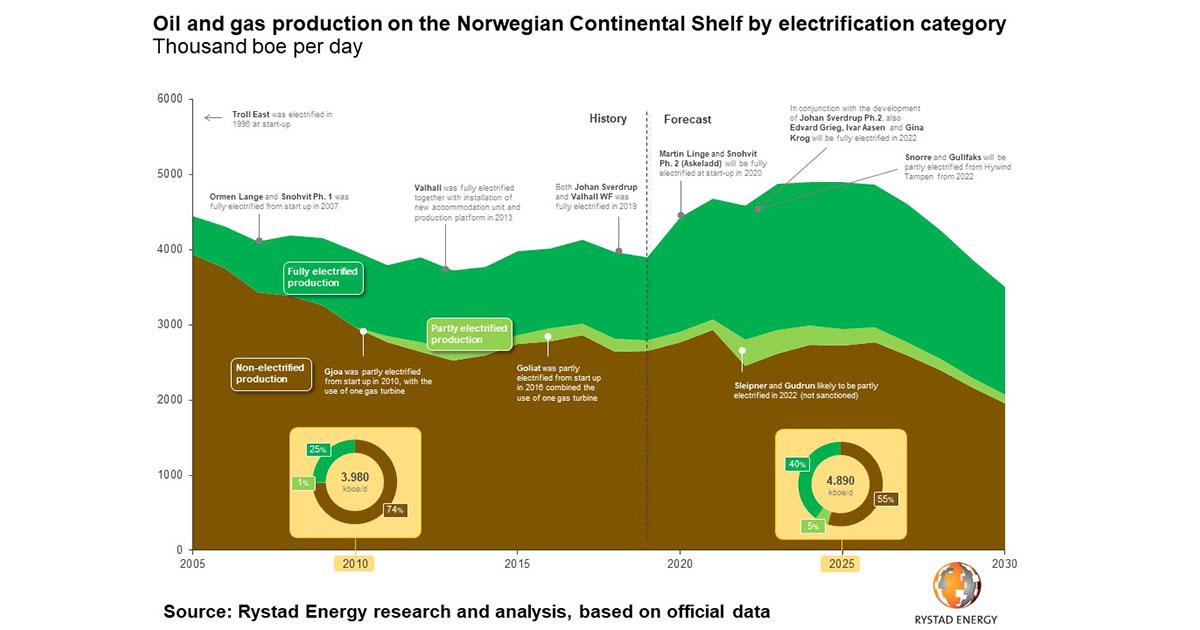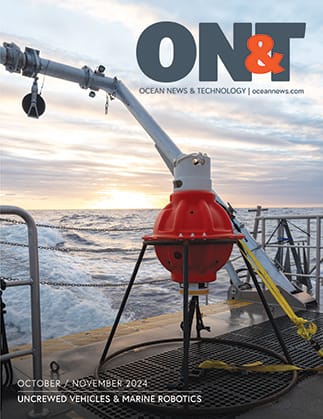The latter infrastructure will also supply power to other developments located on the Utsira High and Sleipner area during the Johan Sverdrup Phase II development. Martin Linge and Snohvit Phase 2 (Askeladd), both with planned start-up in 2020, will also get power from shore. Hywind Tampen, the world largest sanctioned floating wind park (88MW), takes offshore electrification to the next level. From around 10% in 2005, the Norwegian oil and gas production from electrified offshore platforms have increased to around 30% in 2018.
Rystad Energy forecast that the number will grow to around 40% by 2025, driving down CO2 emissions.

